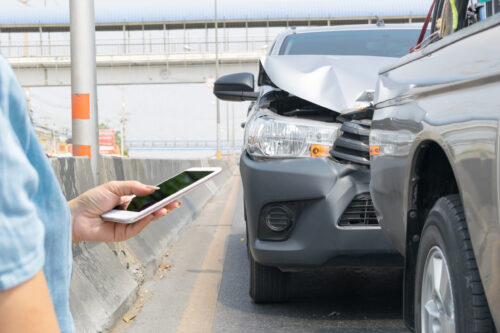
If you were injured in a car accident in Florida, one of the most important things you can do is take photos and/or videos of the incident. Please continue reading and reach out to our skilled St. Petersburg car accident attorneys today.
Why should I take photos after a car accident?
All Cars Involved
You will want to keep in mind that pictures should be taken of all of the cars that were involved in the accident, even if there is no harm to one of them. The photos will be useful in deciphering the cars involved (license plate, make, model, color). Property damage to the cars should also be captured. If safety permits, take pictures before the cars are moved. Take as many pictures as you are able to and make sure you also get shots close-up and from a distance. This is essential to selecting the location of impact, the force of collision, the speed of travel, and the direction of movement. Take photos of the front windshield of the other drivers’ cars. Sometimes something is suspended from the rearview mirror that blocks their view of the street.
Accident Scene
Take pictures of the road and weather conditions, traffic signals and signs, and overall roadway layout. Look for tire skid marks, broken glass, or other things left on the pavement. Sometimes visibility is an important factor in a car accident, so look for large objects that may have obstructed drivers’ view of the road. If there’s a potential argument regarding the color of the traffic light (i.e. red light versus green light), make a video that shows the timing of the lights at the intersection for all paths of travel.
Physical Injuries
Your injuries will gradually heal over time, so you should take photos directly after an accident. Pictures of your injuries will help others determine your physical condition after the car accident. Sometimes your medical practitioner will specify the use of devices such as an arm sling, cervical collar, walker, etc. Take photos of these devices and, if you are able, keep these devices in a safe place even after they become unnecessary for your medical treatment. These devices may be used as evidence in your case.
Other Important Tips
Make sure you set your digital camera or cellphone so that the date (and, if possible, time) appears in the photo. This will help determine the problem of having to remember when the picture was taken if asked later on. Furthermore, back up your digital photographs by saving them onto a second hard drive, copying them onto a thumb drive, burning a copy onto a CD or DVD, and/or printing out the photographs. The last thing you want to occur is losing these photographs because of faulty electronics.